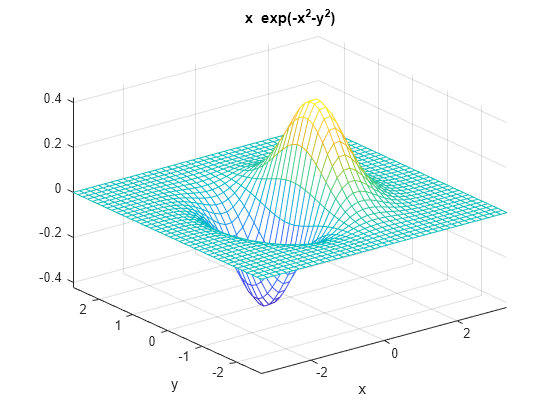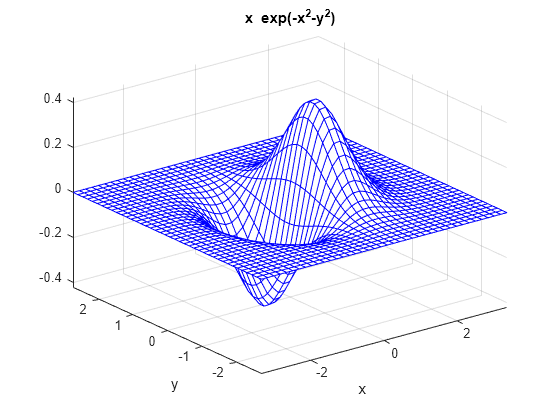ezmesh
(不推荐)易用的三维网格绘图函数
语法
说明
ezmesh( 将在指定区间绘图。要对 f,xyinterval)x 和 y 使用相同的区间,请将 xyinterval 指定为 [min max] 形式的二元素向量。要使用不同的区间,请指定 [xmin xmax ymin ymax] 形式的四元素向量。
ezmesh( 在指定区间绘制参数化网格。要对 funx,funy,funz,uvinterval)u 和 v 使用相同的区间,请将 uvinterval 指定为 [min max] 形式的二元素向量。要使用不同的区间,请指定 [umin umax vmin vmax] 形式的四元素向量。
ezmesh(___, 使用一个 n)n×n 网格进行绘图。在上述语法中的任何输入参量组合后使用此选项。
ezmesh(___,'circ') 在以该区间为中心的圆上绘制。
ezmesh( 将图形绘制到 ax,___)ax 指定的坐标区中,而不是当前坐标区 gca 中。在上述任一语法中的任何输入参量组合之前指定坐标区。
s = ezmesh(___) 将返回一个图曲面对象。在创建网格图后,使用 s 修改网格图。有关属性列表,请参阅 Surface 属性。

